
This paper was written as part of the 2004 Alaska Ocean Sciences Bowl high school competition. The conclusions in this report are solely those of the student authors.
Effects of Hydrocarbons on Pacific Herring in Prince William Sound
Authors
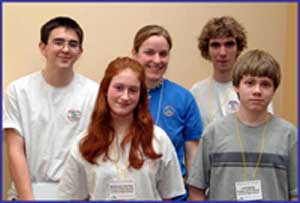
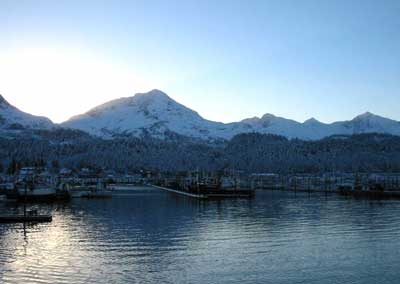
Cordova, Alaska in the winter time.
Abstract
This paper looks at hydrocarbons in oil as a contaminant, and the effects of this contaminant on Pacific herring (Clupea harengus pallasi) in our local Cordova boat harbor. Hydrocarbons are the most vital ingredient in all crude oil and its byproducts. The main sources of the hydrocarbons found in the Cordova harbor are the fishing and recreational vessels that are docked there. However, oil spilled on the streets is washed through the storm drains and into the harbor, also bringing harmful hydrocarbons into the water. These pollutants are a danger to many things, particularly the harbor's marine life.
Pacific herring are small fish found in the harbor that are important for both economical (fishing) and ecological (marine food web) purposes. The effect of hydrocarbons on herring populations was studied at length after the Exxon Valdez Oil Spill (EVOS). Studies found increased mortality in eggs directly exposed to hydrocarbons. The Cordova boat harbor is located such that the water and contaminants flowing from the harbor will be carried by the currents to nearby herring nursery and spawning sites, potentially affecting the mortality of the eggs. Other studies during EVOS found that adult and juvenile herring, the same type of populations found overwintering in the Cordova boat harbor, suffered from viral diseases, genetic disorders, and physical mutations, all of which can devastate the herring's ability to reproduce. The key to reducing the amount of hydrocarbons in the harbor is through education of the local people about the effects hydrocarbons on herring.
Introduction
Oil is used in every aspect of our lives, and with so many people around the world the need for oil is great. Therefore, we need to go to great lengths in order to sustain this valuable natural resource. There comes a negative side to the need to use oil, which is if the resource comes into contact with a marine ecosystem, it has the potential to harm many niches within the complex ecosystem. In our local community of Cordova, which thrives as a commercial fishing village, oil has a variety of pathways into the marine ecosystem. Two of these include direct spills and releases from the commercial and recreational fishing boats and runoff from the streets of the town. This oil has the potential to affect many organisms within the system; however local Pacific herring populations are particularly at risk due to the location of their spawning and nursery grounds and their decision to overwinter in the protection of the boat harbor.
Hydrocarbons
In the simplest form, hydrocarbons are the basis for fuel energy. They are the main compound in oil and are found in everything formed from crude oil, including plastics and rubber. They are made up of several hydrogen atoms attached to a few carbon atoms. Some hydrocarbons can be very dangerous while others are used in everyday life. There are several principal groups of hydrocarbons which are a paraffin mixed base and aromatic (Lemay, 1996). The difference is in the chemical formula and depends on how many carbon atoms are attached to each other and how many bonds are formed between carbon atoms. Two different ways hydrocarbons are composed are chain and rings. Chains (Figure 1) are straight lines of carbon atoms bonded with hydrogen atoms. These are severely weaker than its counterpart (rings), this is because of the single strait bonds that they form. The rings (Figure 2) on the other hand can have lasting effects because they don't deteriorate or evaporate as easily as the chains. This is because of their composition. Unlike the chain hydrocarbons, rings can form double bonds that makes them much more formidable.
Since hydrocarbons are in oil, they can be found in fuel and many products ranging from dry cleaning solvents to propane. When crude oil is being refined, the oil is boiled and the hydrocarbons go into the air. The various hydrocarbons settle at different heights (when they evaporate the different compounds weights differ from each other) and are collected and processed into all the different fuels formed by oil. Oil is an essential part of everything we have in our life, ranging from the electricity we use to the packaging in the boxes we receive that are made of plastic. There are some alternatives to oil, for example we can build electric cars, but it still remains one of the most required natural resources we have.
When oil gets in the water hydrocarbons will linger on the surface and after time, some of them may be broken down or evaporate, but they all won't go away (Rice, 1984). Looking in the sediment on the bottom of the water or looking closely at water you can still see its traces. Once it is in the water it is difficult to remove.
Some studies claim that it has little impact on the environment. However, during the 1989 Exxon Valdez Oil Spill, numerous studies made it apparent that hydrocarbons can cause great damage to the ecosystem. In fact, there are lasting effects that we are just starting to see. In Valdez, Alaska at the oil terminal, they have to pump out ballast water from boats and oil tankers which has to be treated to remove contaminants. However, they use a treatment process which takes out 99% of hydrocarbons, but due to the large amount of ballast water being used (10-15 million gallons a day), a large amount of hydrocarbons are still being pumped into the ocean (Rice, 1984). This problem can be seen locally. The hydrocarbons found in oil released into our local harbor have the potential to cause the same harmful effects on the environment.
Local Sources of Hydrocarbons
There are two main sources of pollution into the Cordova harbor. The two categories are defined by the Federal Water Pollution Control Act, commonly known as the Clean Water Act (CWA). First there is a point source, defined as polluted material discharged from municipal or industrial facility or any floating craft directly into the water. Commercial and recreational vessels docked in the harbor discharge bilge water, black water (sewage) and other potentially hazardous material (garbage). Any oil leaks aboard the boat will run into bilge and get pumped overboard, garbage that is dumped could contain worn-out oil soak pads or other material with oil on it. Industrial buildings are also considered point sources. The canneries and auto repair shops are very close to the harbor and both facilities could discharge oil that either gets carried into the harbor by the tide or runs off from the streets.
The other source of hydrocarbons in the harbor is called a non-point source, defined as any source of water pollution that does not meet the legal definition of point source. Cordova is built on a hill surrounding the harbor and has an estimated 180 inches of rain a year. The rainwater picks up pollutants from the surface of roads and sidewalks and goes into the storm drains that empty directly into the harbor. Homes and cars are not subject to the requirements of point sources and they are a lot harder to monitor. Heating oil that leaks from houses and oil and gasoline spills from car all contain hydrocarbons that pollute the Cordova harbor. (EPA, 2003)
Importance of Pacific Herring
Pacific herring (Clupea pallasi) are one of the key organisms in the Prince William Sound ecosystem. Herring are one of the main foods for both marine and land predators, including eagles, sea lions, jellyfish, and seagulls. In particular, the Steller sea lion that has been the subject of research because of their rapid population decline depends mainly on herring as a food source. In fact one of the theories for the Steller sea lion population decline is the decreasing population of herring. Herring are not just prey in the intricate marine food web but, they are also a part of the natural cleaning system. One of their main food sources is zooplankton, microscopic organisms that at high density "cloud up" the water and reduce production of other marine life. By eating the zooplankton, herring prevent this from happening.
Herring also provide a good fishing industry for humans, bringing in around 12 million dollars each year (Gray, 2004). However, the Cordovan fishing industry has been closed due to the declining population of herring in the Prince William Sound. Many studies have taken place to explore several possible reasons for this decline. Some of the main explanations include the Exxon Valdez Oil Spill (EVOS), over harvesting and predation (Brown and Carls, 1998). In order for the local fishery to open again the herring will have to grow to a healthy, sizable number. Herring are not only a part of the commercial fishery, but are also important to the Native population of Prince William Sound. Natives harvest the herring eggs on kelp leaves and use the eggs in a variety of traditional Native dishes. A declining herring population reduces the availability of spawn, reducing an important food source for Native Alaskans.
Biology of Pacific Herring
Herring are able to spawn around the age of three or four years old. This spawn is located in nursery-like in shore areas where they can be protected from water currents. Spawning is usually done mid-April through May where the eggs are attached to kelp or seaweed beds. In the Prince William Sound there are 5 large spawning sites, the Southeast site closest to Cordova (Figure 3). The eggs hatch in July and the juveniles will then travel to nursery-sites to eat and grow big. These nursery sites are other protected near-shore habitats. Some of these are in close proximity to Cordova as seen in (Figure 3).
Herring also utilize near-shore protected areas in the winter, when they eat very little and live off of lipid fat reserves (Brown and Carls, 1998). Some adult and juvenile populations overwinter in the Cordova boat harbor because the shallow and calm water keeps them from being pushed out into rough currents. Another unique behavior of the herring is that they come to the surface of the water to "breathe," exchanging gases from their swim bladder directly into the air rather than in the water like most other fish (Thorne, 1990). This process leaves them exposed to danger, particularly hydrocarbons found in oil floating on the surface of the water.
Effects of Hydrocarbons on Pacific Herring
Most existing studies done on the effects of hydrocarbons on herring are done during the early life stages. This is because the embryo and larval stages are the most sensitive and vulnerable to the negative effects of hydrocarbons found in oil. The effects are not just limited to the early life stages however; in fact, all stages of a herring's life are affected. The best evidence of these effects were generally documented during the years following the Exxon Valdez Oil Spill (Ott, 2003). Effects can range from viral diseases to genetic disorders and physical mutations, all of which can devastate the herring's ability to reproduce (Norcross, 2001).
Immediately after the Exxon Valdez Oil Spill, Evelyn Brown (Ott, 2003) conducted research on the hatching of herring roe on oiled beaches for several years. The results were devastating. Of the eggs that hatched on the oiled beaches, 99.9% of the larvae died immediately. Only several million herring larvae actually survived, a small percentage compared to the several billion that survived on non-oiled beaches. The larvae that survived had mutations and some grew a lot more slowly than normal herring. At the molecular level, many had deformed cells and damage to their DNA. Later in Brown's research (Ott, 2003), she came to the conclusion that these abnormalities were directly related to the concentration of oil – the greater the concentration of contaminants, the more abnormalities found in the herring (Ott, 2003). Cordova's harbor carries these toxic hydrocarbons due to the high commercial fishing activity in the harbor and the storm drainage carrying run-off directly from the streets to the harbor. The contaminants might be taken to nearby major and minor spawning areas, perhaps causing these effects.
Brown also did research a few years later (Ott, 2003) about the effects of oil on older herring. Herring that were exposed to these hydrocarbons when they were a year or older didn't spawn to their full potential when they were four-year-old adults. In some of the worst cases, more than half the eggs died. Also, of the eggs that successfully hatched, some had the mutations similar to eggs that were directly exposed to oil. In other words, the mutations caused by hydrocarbons in oil can be directly passed from generation to generation. Herring that were actually spawning during 1989 were affected by the oil too. Instead of mutations, immune system deficiencies were taking place, causing the herring to become a lot more vulnerable to diseases, meaning that a disease outbreak could occur (Ott, 2003). This age group of herring is the same as the ones that winter over here in and around Cordova's harbor for a period of six months. When they come into contact with hydrocarbons, these herring could experience similar effects. Hydrocarbons released into our harbor have the potential to restrict the size of the herring population that could otherwise be produced.
Overall, because the contaminants from our harbor could reach herring nursery and spawning grounds and the grown adults that over winter in the harbor and come to the surface to exchange gases. The local herring population that is an integral part of the local culture, economy, and food chain is in danger. First of all, we risk giving eggs and newborn larvae genetic disorders, such as mutations and other genetic damage that could result in death. If they survive, these herring could pass these mutations to their offspring when they are old enough to spawn. Also, we risk giving the older fish immune and reproductive deficiencies. Many herring are vulnerable to the long-term and widespread effects of the toxic hydrocarbons that are in our harbor.
Suggestions for the Future
In order to reduce the amount of oil reaching the Cordova harbor water, there are a few key steps that need to be taken. Education and awareness are the most important because if people are aware of the potential effects of what they are dumping into the harbor, they are more likely the think twice about it. Education is also important for teaching the correct way to handle spilled oil. For example, many people put soap in the water to make an oil slick disappear. But all this does is stick to the molecules in the oil and make it sink to the bottom. Setting up meetings, making fliers, and putting information on the radio are ways to educate people on the potential effects of oil in water. Funding for this could come from the Oil Spill Recovery Institute (OSRI) located in Cordova, AK. One of their three priorities is educational projects that are designed to address oil in Arctic and Sub-Arctic marine environments.
It would also be helpful help the City of Cordova to create safe places for getting rid of oil. Currently, there is a used oil dumping station by the harbor. However, it is a very long walk from the floats where the boats are docked if you are carrying a lot of oil. Barrels placed on the docks could temporarily hold waste oil. When these barrels are full someone could be hired to transport them to the larger dumping station or directly to the power plant where the waste oil from boats could be reused by the power plant. If people knew the oil was being used again, it might encourage them use the oil dump stations.
If cars were maintained more frequently and houses checked for leaks more often then it would greatly reduce the runoff that reaches the harbor. Again, the biggest step is to make people aware that when they dump oil on the ground, it is probably going to drain into the harbor. Also, potential treatment for runoff could be surface skimming, before it was released into the harbor.
As people we depend on oil in our everyday lives and there is no way to stop fisherman from using oil, but we can prevent a lot of oil from reaching the harbor where it has a hazardous effect. If we reduce the hydrocarbons in the Cordova harbor then herring and other marine life will be safer and healthier to spawn and grow.
Figures
Figure 1.
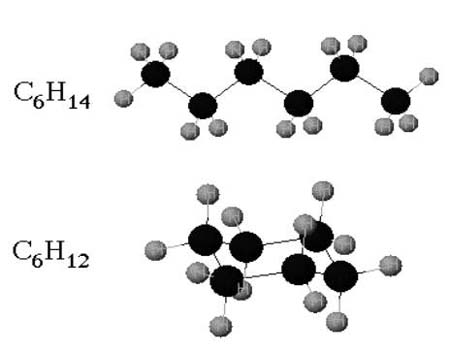
A Chain Hydrocarbon with no double bonds.
Figure 2.
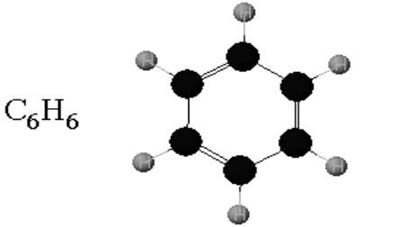
An Aromatic Hydrocarbon with several double bonds.
Figure 3.
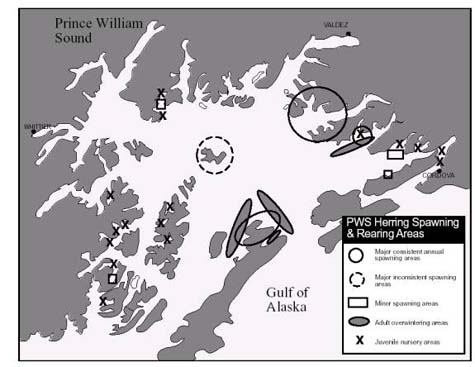
Prince William Sound herring spawning locations in relation to Cordova in the far right. The juvenile nursery sites are shown by the X.
Works Cited
Brown, Evelyn D. and Carls Mark G. 1998. Pacific Herring Restoration Notebook. EVOSTC. September: 1-8.
Carls, M.G., S.W. Johnson, RE Thomas, and Sprice. 1997. Health and reproductive implications of exposure of Pacific herring (Clupea pallasi) adults and eggs to weathered crude oil, and reproductive condition of herring stock in PWS six years after the EVOS. EVOS Restoration Project 95074 Final Report.
EPA; regulatory programs. http://www.epa.gov/owow/oceans/regulatory/index.html. 11/2003.
Gray D., D. Ashe, J. Johnson, R. Merizon, and S. Moffitt. 2004. Prince William Sound Management Area. 2002. Annual Finfish Management Report. Regional Information Report No. 2A03-30. Alaska Department of Fish and Game, Division of Commercial Fisheries, Anchorage, Alaska.
Hild, Carl M. "Contaminants in Alaska: Is America's Arctic at Risk?" 2002. Status of Alaska's Oceans and Watersheds 2002; 97-107.
Lemay Eugene H., Jr. 1996. "Chemistry: Connections to Our Changing World." Prentice-Hall.
M.G. Carls, S.W. Johnson, R.E.Thomas, and S.D Rice. 1997. Pacific Herring Review and Synthesis.
Norcross, Brenda L. 2001. A Synthesis of The Life History and Ecology of juvenile Pacific Herring in Prince William Sound, Alaska. Fish. Oceanogr. 10(supp.1), 42-57.
OSRI. http://pws-osri.org/about_osri/, 2/10/2004.
Ott, Riki. 2003. Sound Truth and Corporate Lies. Manuscript Only
Rice, Stanley D. 1984. Effects of petroleum hydrocarbons on Alaskan aquatic organisms: A comprehensive review of all oil – effects research on Alaskan fish and invertebrates conducted by the Auke Bay Laboratory. 1970-81. NOAA Technical Memorandum.
Thorne, R.E. and G.L. Thomas. 1990. Acoustic observations of gas bubble release by Pacific Herring (clupea harengus pallasi). Can. J. Fish Aquatic Science 47:1920-1928.
This page is HTML 4.01 validated. Last modified 04-May-2004. Contact ASG web coordinator.